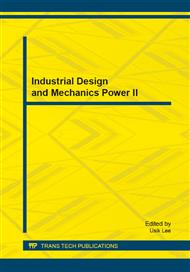p.331
p.335
p.341
p.346
p.353
p.358
p.362
p.366
p.373
Intelligent Fault Diagnosis Means and its Application
Abstract:
The main point of intelligent fault diagnosis theory is fault mode distinguishing principle based on data processing methods. Pointing to the problems of the traditional fault diagnosis mode, the intelligent fault diagnosis method based on the virtual instrument (VI) and neural networks (NN) is proposed. The signals collection and management based on VI is introduced, the basic method of the NN for distinguishing the faults and its fault-tolerant control are analyzed. For fastness and accuracy, connecting the wavelet analysis with the NN organically, and based on the wavelet transfer and the NN, the system of the speedy features extraction and identification for the faults is founded. The method of the feature extraction for the faults based on the wavelet analysis are established, the realization idea of the fault diagnosis based on the NN is put forward, and the hardware and software structure of the fault diagnosis based on the NN are discussed. The experimental and simulated results show: it is feasible that analyses for the faults with the NN and the wavelet analysis. The method can remarkably heighten the accuracy and credibility of the fault diagnosis results, and the results are of repeatability.
Info:
Periodical:
Pages:
353-357
Citation:
Online since:
October 2013
Authors:
Price:
Сopyright:
© 2013 Trans Tech Publications Ltd. All Rights Reserved
Share:
Citation:


